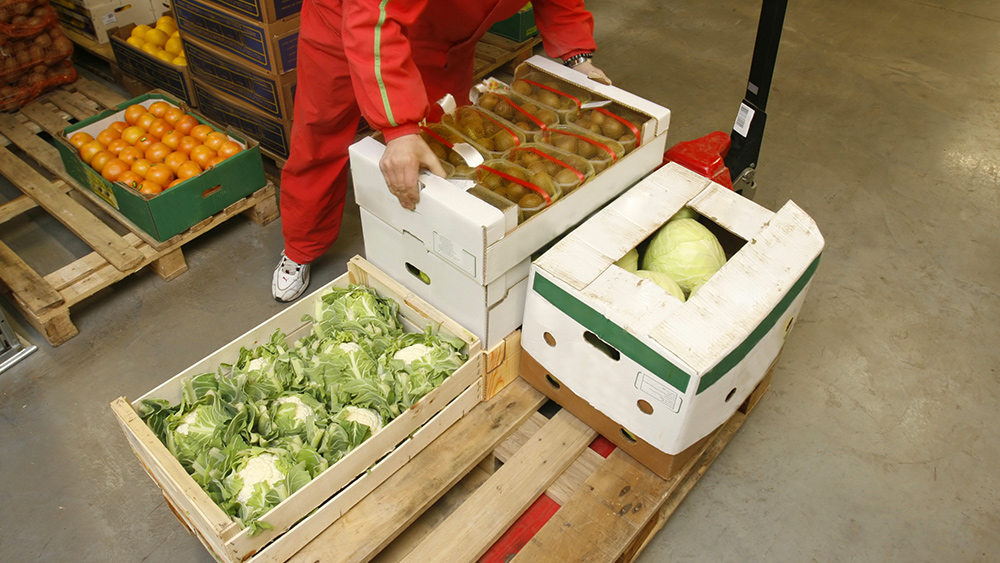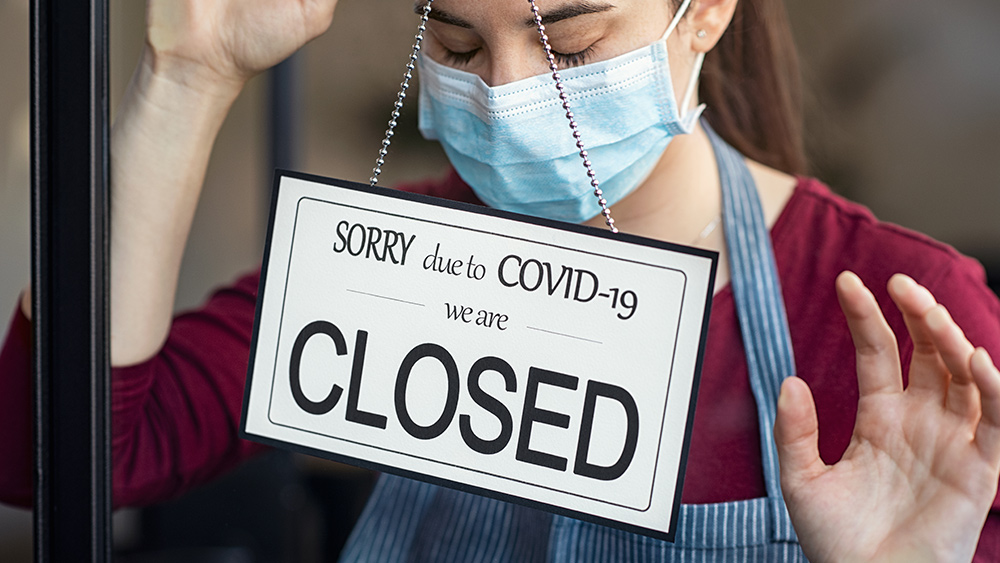Retailers are now stockpiling products in case a new coronavirus surge cases causes more “panic buying”
10/03/2020 / By Zoey Sky

With no sign that the Wuhan coronavirus (COVID-19) pandemic is ending anytime soon, retailers are now worried about running out of staples again when shoppers flock to stores to stock up before the holidays.
There have been over 1 million coronavirus cases in America according to data from Johns Hopkins University. Even as caseloads declined over the summer, health experts have advised these could rise again this fall.
A surge in cases could see the return of restrictions and social distancing measures. This, in turn, could result in an increased demand for supplies, which, coupled with the normal holiday boom in grocery sales, could see a return of the empty store shelves seen earlier this year.
To ensure they don’t run out of items during the upcoming holiday rush and possible resurgence in COVID-19 cases, retailers have now come up with various strategies like stockpiling on goods early and setting up “pandemic pallets.”
Supermarkets and food companies now building stockpiles
During the early days of the pandemic, stores across the country were running out of toilet paper and cleaning products, along with staples like rubbing alcohol and hand sanitizer. This time, industry leaders are confident that they won’t be caught unprepared if they need to deal with another pandemic surge.
Anthony Hucker, Chief Executive of Southeastern Grocers, reported that the company has already secured hams and holiday turkeys over the summer, months before it usually undergoes inventory planning.
Chris Testa, president of the grocery wholesaler United Natural Foods, shared that the company has loaded up on extra inventory of cranberry sauce, herbal tea and cold remedies. The wholesaler had started preparing for Thanksgiving back in June, the earliest it has ever done so.
Darin Peirce, vice president of retail operations for Associated Food Stores (AFS), a cooperative of more than 400 stores, explained that AFS has already begun building “pandemic pallets” that includes cleaning and sanitizing products. This ensures that AFS always has some inventory in warehouses when demand skyrockets once again for staples.
Other food distributors like SpartanNash are buying more food as soon as they can and stocking warehouses with popular wellness and holiday items. Meanwhile, many retailers are focusing on “expanding distribution capacity, augmenting warehouse space and modifying shifts” to prepare for a new wave panic buying should COVID-19 cases surge once more.
These changes in operation were triggered by the sudden and massive shortages grocers experienced last spring. It also suggests that the industry is shifting away from the just-in-time inventory management systems that it’s used for decades.
Panic buying not expected to match that seen in March
Even as they prepare for the worse, industry executives don’t think a surge in grocery demand this winter will match the chaos seen in March when people worried about grocery-store closures or food shortages started panic buying. Sean Connolly, chief executive of Conagra Brands Inc., believes that people are better prepared now that they’ve experienced life in extended lockdowns.
Retailers also hope that recent investments in warehouses and e-commerce can help them address the demand for home deliveries for the rest of the year. But despite these new strategies, stores still struggle to stock up on staples like canned vegetables and cleaning wipes because of the continued high demand.
Manufacturers are also still struggling to keep up. Other manufacturers are worried that they will lose production capacity the minute infections break out among employees. Other issues might also prevent people from working, such as lack of child care amid the pandemic. (Related: FOOD SUPPLY in jeopardy: US farmers getting hit hard by coronavirus, even with record levels of financial aid.)
Pandemic has disrupted companies
Jim Snee, CEO of Hormel Foods, said that the company has 24 percent less inventory compared to 2019. If coronavirus cases among workers interrupt production again, the company will eventually run out of staples like bacon, pepperoni, Skippy peanut butter and SPAM canned meat.
During the pandemic, General Mills has struggled to meet the demand for popular items like Betty Crocker cake mixes, Pillsbury refrigerated dough and Progresso soup even after increasing its production capacity.
Additionally, manufacturers have prioritized the production of in-demand products to help some items recover inventory in the last few months of the pandemic.
Both General Mills and Kellogg have been able to rebuild inventory in their cereal businesses. In an interview, Jeff Harmening, General Mills CEO, explained that even if shoppers can’t find the exact flavor they prefer, they can still buy similar products.
Brett Biggs, Walmart’s Chief Financial Officer, mentioned that the company is overriding its grocery-ordering algorithms in several stores to build up extra inventory. This is an about-face for a company that spent several decades “becoming increasingly lean.”
Coca-Cola has also started making fewer varieties of drinks to address the demand for more popular beverages. This means that during the pandemic, customers often come away empty-handed when looking for items like Fresca or Diet Coke.
James Quincey, Coke’s CEO, said that while the company now has a “clear strategy” for how it wants to address the challenges the pandemic may bring, it still has to figure out a way to survive the winter in the Northern Hemisphere.
Visit Pandemic.news to learn how retailers are trying to address increasing consumer demand for pantry staples.
Sources include:
Tagged Under: 2019-nCoV, China, coronavirus, covid-19, Flu, food supply, grocery, grocery supply, infections, novel coronavirus, outbreak, pandemic, Panic Buying, products, Retail, stockpiling, superbugs, virus, Wuhan coronavirus
RECENT NEWS & ARTICLES
COPYRIGHT © 2017 COLLAPSE.NEWS
All content posted on this site is protected under Free Speech. Collapse.news is not responsible for content written by contributing authors. The information on this site is provided for educational and entertainment purposes only. It is not intended as a substitute for professional advice of any kind. Collapse.news assumes no responsibility for the use or misuse of this material. All trademarks, registered trademarks and service marks mentioned on this site are the property of their respective owners.




















